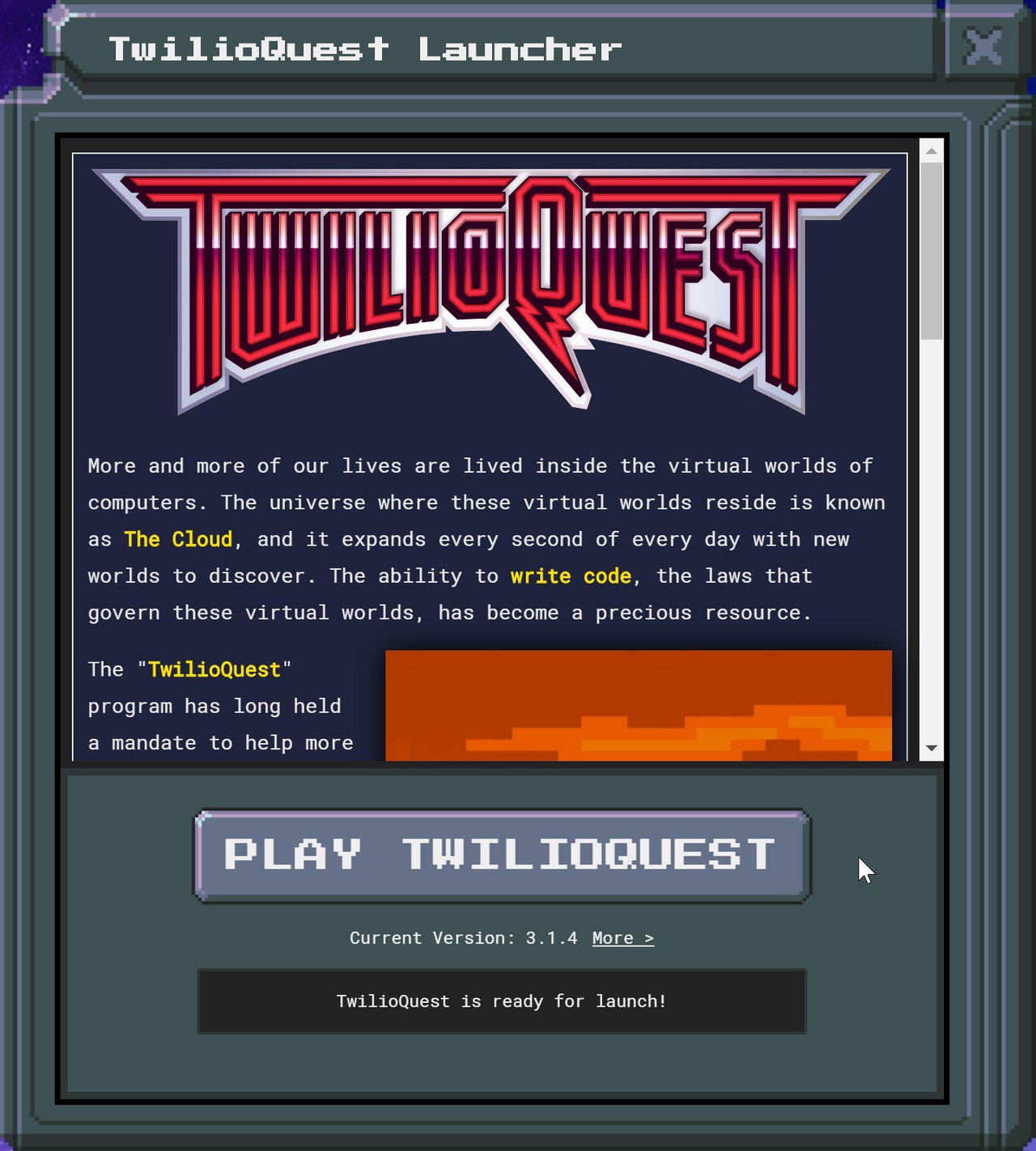Developers: This cute 8-bit RPG game wants to teach you new coding skills


Enter the world of cloud development...
How do you train developers? You could send them to a training company, but does the syllabus cover what you need them to know? The rapid rate of change in platforms and APIs in today's continuous delivery world makes it hard to set a training program in stone and harder still to be sure that you're learning what you need to know to be successful.
techrepublic cheat sheet
One answer to the problem is good documentation, providing developers with regularly updated information, delivering that as part of the build process for a library or for an API. If documentation isn't ready, then a build must fail; code should never be released without documentation.
SEE: How to build a successful developer career (free PDF)
Another is delivering self-paced training, embedding coding tools and test suites into training programs. That's the approach taken by services like Microsoft Learn, using its documentation as a source of training but offering in-line code scratchpads where you can try out what you've just learnt. It's certainly a valid approach, if a little dry at times. Getting developers to start working with your training program is hard, getting to stick with it is a lot harder. Microsoft itself took a lesson from Salesforce's Trailhead, offering badges to show achievements.
If training has the same reward model as a game, then why shouldn't it be a game in its own right? That was what the team at Twilio thought, with its TwilioQuest training platform. Taking its cues from 8-bit Japanese RPGs, TwilioQuest used the structure of an adventure to take you through training modules, advancing the story with each new exercise.
TwilioQuest's framing narrative puts you on a spacecraft, or rather a cloudcraft, full of puzzles and tasks.
Twilio's recent Signal event saw it unveil TwilioQuest 3, a major update of the platform and service with training modules for many of Twilio's newest services and APIs. I've been spending some time with it, getting a feel for how anyone who wants to learn to use Twilio's telephony services might use it.
With support from a roster of chiptune artists (you can download the soundtrack for the application), TwilioQuest 3 moves off the web and onto your desktop with Windows, macOS, and Linux versions. It's a quick download and all you need to get started is an email address. As you explore the various tasks and training scenarios, you'll add more tools, and more service accounts. TwilioQuest goes a lot further than most training platforms: it's also a guide to building a modern toolchain, one that's centered around open services like GitHub and extensible tools like Microsoft's Visual Studio Code, as well as you choice of public cloud platforms.
READ MORE: Bridging the gap between developers and operations, or not
Once you've installed TwilioQuest you'll be introduced to life in the cloud, and your cloud exploration vessel, the Fog Owl (don't worry about the name, it's a reference to a Twilio in-joke about one of its core company values: "just draw the owl"). A few simple tasks walk you through how to choose a training path, and show you the various commands. Controlling a small animated figure, you walk down gated paths, where each gate is unlocked by solving a puzzle. With a friendly robot sidekick to guide you through your missions, you'll get hints and help as you go, with TwilioQuest converting what would have been dry documentation into game cutscenes.
Choose a training module to start your quest.
So how do you learn? Each gate is a step in a self-paced training program. The puzzles may be as simple as entering a key phrase from some documentation, or using the built-in editing environment to stand up a test web server, one that starts with static text and builds up to hosting Twilio-powered telephony applications. Each successful task opens a new section of the training environment, on to the next lesson. Lessons can be quite short; the initial familiarization tasks can be covered in a lunch break. More complex lessons can take quite a bit longer.
Each gate in a TwilioQuest training path is a task that must be solved before you move on to the next stage.
At Signal I got to sample one training path that guided you through setting up a Raspberry Pi with a cellular connection and Twilio's new trusted SIM, connecting it to an Azure IoT hub and then using it to transmit temperature and pressure data over a cellular connection. It's a relatively complex set of tasks, involving configuring devices, setting up Azure accounts and resources, as well as registering SIMs and telephone numbers with Twilio's own service. Completing the process in under an hour and a half seemed something of a personal triumph, as it's taken me a lot longer to handle simpler tasks in the past.
The app contains basic development tools, like a web server and a text editor, but also helps guide you through building your own toolchain.
Of course there are rewards for completing tasks: adding clothing and other items to an inventory for your avatar, as well as unlocking developer credits for Twilio's services. I really only have one issue with the current release of the app, as it's a standalone tool there's no shared record of your progress, making it had to show to share your achievements with management and team leads. That also makes it hard to use TwilioQuest on more than one machine, as you can't pick up tasks started in the office at home.
Still, despite those minor issues, Twilio has delivered a major upgrade to its training program. Just don't be surprised if you hear tinny little chiptune bleeps coming from your developers' PCs over lunch. They're probably not playing games, this time anyway.